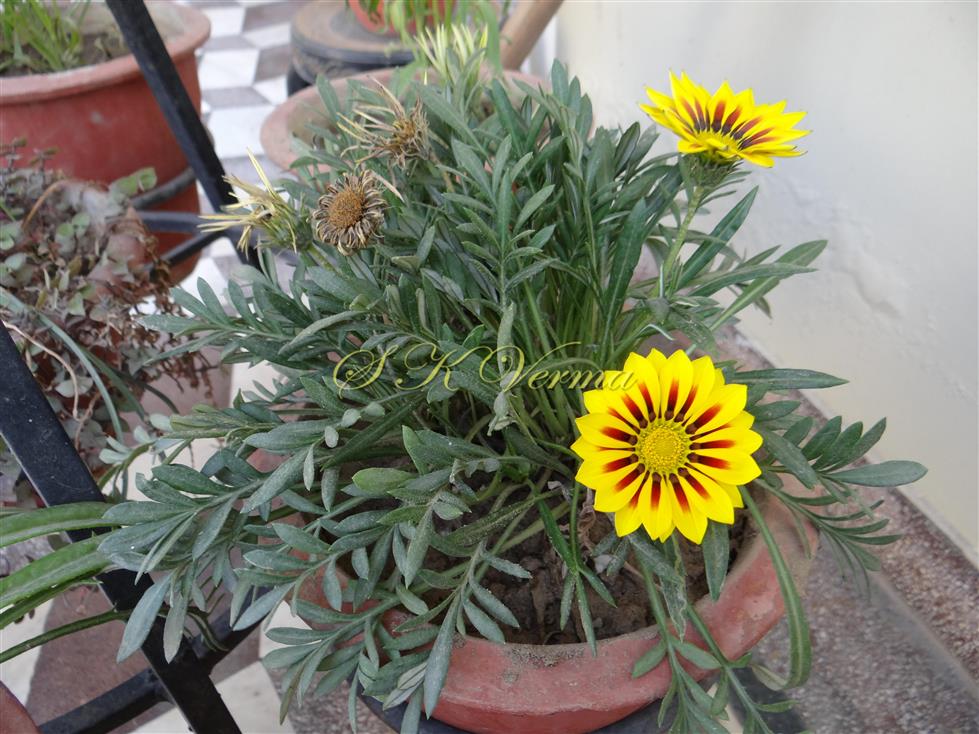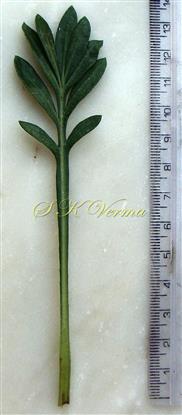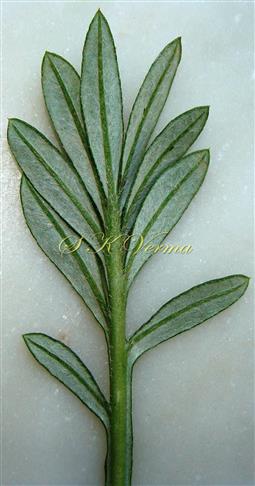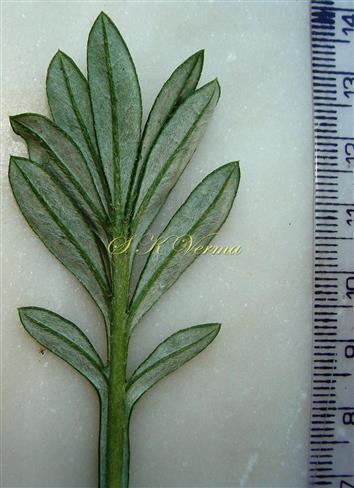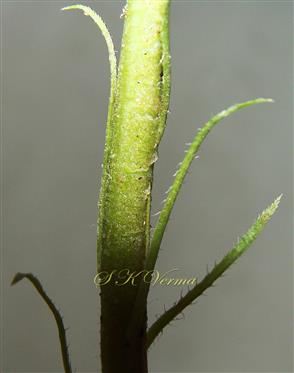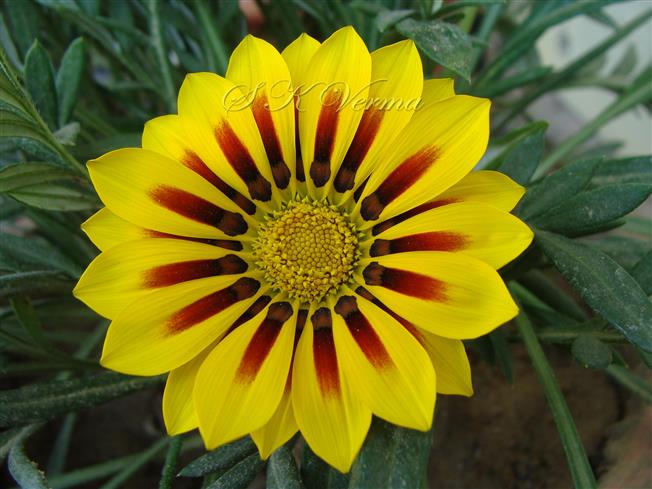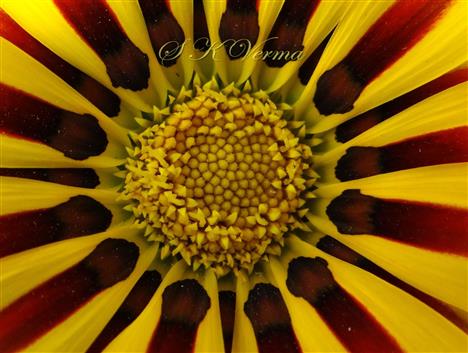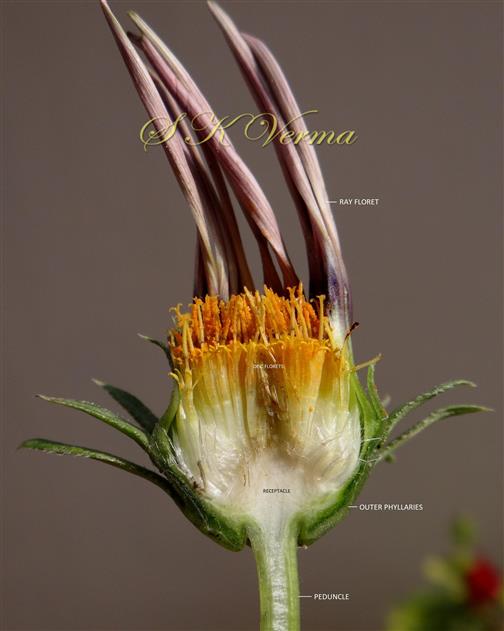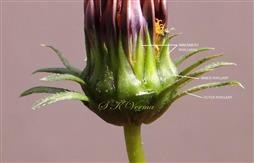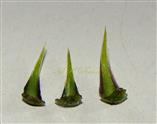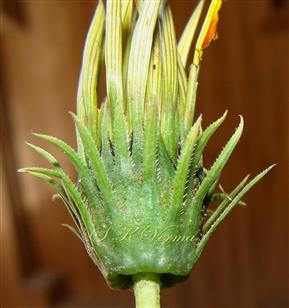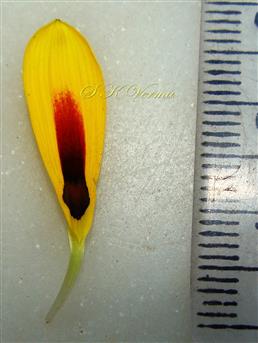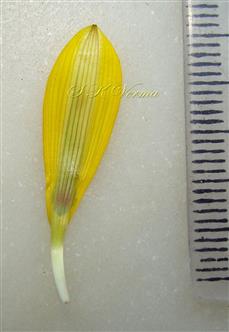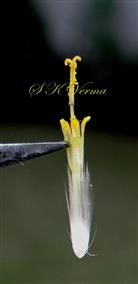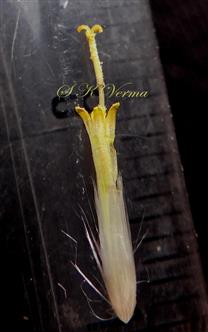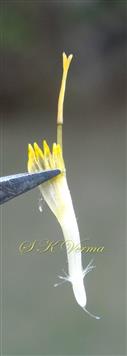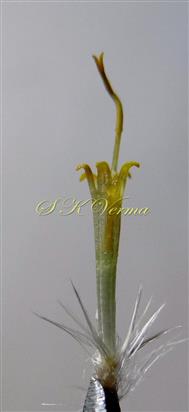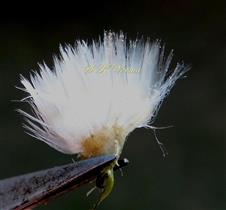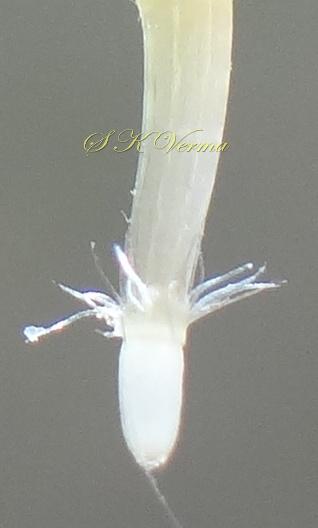GAZANIA
Gazania
Gaertn., Fruct. Sem. Pl. 2: 451, Plate 173, fig. 2. 1791; Mahoney, Fl. North Amer. @ eFloras.org 19-21: 196.
Perennials, rarely annuals, shrubs; mostly 10-35 cm, often caespitose, not prickly, sometimes with milky sap. Stems usually erect, rootstocks often woody. Leaves usually basal, sometimes cauline as well; petiolate or sessile; blades linear to lanceolate, spatulate or oblanceolate, margins entire or pinnately lobed, abaxial faces white-woolly, adaxially usually glabrate or glabrous, sometimes arachnose. Capitula solitary on peduncles, radiate. Involucres +/- campanulate, turbinate or cylindric, mostly 10-15+ mm diameter. Phyllaries in 2-4 series, connate 1/3-3/4 their lengths, margins +/- scarious, apices acute, abaxial faces glabrous or arachnose to tomentose. Receptacles conic or convex, deeply alveolate (pits enclosing cypselae, their margins often ciliate). Ray florets: neuter. Corolla yellow, orange, or red to maroon, usually each with darker abaxial stripes and a darker adaxial spot or blotch near base; limb 5-veined, 4-toothed. Disc florets: Bisexual, fertile. Corolla yellow to orange. Cypselae obovoid, ribs 0, faces villous. Pappi persistent of 7-8(-12+) lanceolate to subulate-aristate scales in 2 series (+/- hidden by hairs on cypselae).
19 species
Gazania rigens
Gazania rigens
(L.) Gaertn., Fruct. Sem. Pl. 2: 451. 1791; Gorteria rigens (L.) L., Sp. Pl., 2.2: 1284. 1763; Othonna rigens L., Pl. Rar. Afr. 24. 1760.
Perennial herb, spreading by root stocks, 10-30(-50) cm, often caespitose. Stem erect, root stocks woody. Leaves mostly basal, clustered, sometimes cauline as well, blue-grey, 4-14 cm x 0.5-4 cm; leaf base attenuate into petiole like structure, scaberulous; leaf blade highly variable in shape: simple, long, narrowly oblanceolate, margin entire; pinnatisect into few to many lobes, lobes 1.5-2.8 cm x 4-7 mm, oblong-lanceolate, ultimate margins entire, apex acute, apiculate, upper surface green and glabrous or sparsely hairy, hairs stellate, lower surface white tomentose. Capitula 6-10 cm across, radiate, solitary on erect peduncle, peduncle 6-20 cm long bearing 1-few bracts, bracts ca. 2 cm long, linear, leafy with ciliate and scaberulous margin. Involucre +/- campanulate, 1-1.5 cm across. Phyllaries many, in up to 6-7 series, connate 1/3-3/4 their lengths, linear-lanceolate, 3-12 in each series; in outer 3-4 series phyllaries recurved or spreading, 1-1.3 cm x 1-2 mm, margin with narrow teeth, apex acute to acuminate; phyllaries of next inner series ca. 1.3 cm x 3 mm with 2 marginal black stripes; phyllaries of innermost 2 series relatively large, 1.2-1.4 cm x 2.2 mm, erect, connate at base to form cup-like structure, margin scarious. Ray florets: Many, in one series, neuter. Corolla tube ca. 8 mm long, limb 3-5 cm long and ca. 1 cm wide, oval, elliptic, obovate or oblanceolate, variable in colour, usually bright orange or yellow with a black base usually marked with a white dot, all dots together forming a ring around disc florets. Disc florets: Numerous, ca. 1.5 cm long, bisexual, fertile, orange or yellow. Corolla campanulate, ca. 8 mm long, apex 5-lobed, lobes ca. 2 mm long, lanceolate. Style bifid, exserted, ca. 1 cm long, with a prominent joint. Cypselae ca 4 mm long, obovoid, faces villous. Pappi persistent, of 7-8(-12+), lanceolate to subulate-aristate scales in 2 series (2-3 mm long), usually obscured by long hairs.
Common Names: Clumping Gazania, Gazania
